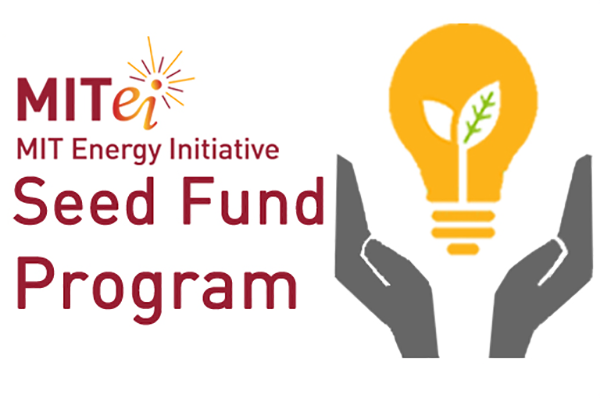
The MIT Energy Initiative’s second round of seed grants for energy research, announced this week, will go toward a wide array of research topics ranging from micro-hydropower and solar-thermal power projects for developing countries, to the development of novel materials for insulation or for power generation, to computer software that can help to optimize energy use in cities or in a whole nation.
Seventeen projects received grants in this second round, with total funding exceeding $1.7 million. A previous set of grants received funding in January of this year, and the MIT Energy Initiative (MITEI) will continue to award grants twice each year.
Among the new projects are two that are aimed at developing new solar-thermal systems to bring electric power as well as heating to rural villages in the developing world. One of these, headed by Rajeev Ram, professor of electrical engineering and associate director of the Research Laboratory for Electronics, could capture heat from existing solar cookers, or even from conventional woodburning stoves, that are in use in many villages in Asia. The solid-state thermoelectric devices would produce about 20 watts of power to provide reading lights that are 150 times more energy-efficient, as well as cleaner, than the kerosene lamps now in use.
Three other groups receiving the grants are also working on thermoelectric systems — solid-state devices that generate electricity from temperature differences, without the need for any moving parts. One group is seeking to find novel materials that may be more efficient than existing thermoelectric compounds; another is developing thermoelectric systems that can be scaled up to large power-producing plants; and the final group is examining the potential of photonic crystals to capture energy from waste heat.
Another solar thermal project, led by Harold Hemond, the Leonhard Professor of Civil and Environmental Engineering, and Ahmed Ghoniem, professor of mechanical engineering, aims to develop larger installations that could provide power to a village school or clinic. The solar concentrating system, using mirrored troughs to focus sunlight on liquid-filled tubes and photovoltaic cells, could provide heat and power all from the same unit.
Another project will try to develop control systems for “self-powered” devices, such as biomedical sensors or therapeutic devices that generate their own electricity from the user’s movements or body heat so that they never require battery replacement. And another will seek to develop new materials that will work better as either insulators or heat-conducting material for radiators or cooling systems.
A project headed by Alexander Slocum, the Pappalardo Professor of Mechanical Engineering, will work on designs for far-offshore windmills with a built-in energy storage system to provide on-demand power. The system would use water pumped inside a huge concrete base as storage for energy produced by the wind turbine, and the platform could also be connected to wave or current generating systems.
Funding for the new grants comes from MITEI’s Founding and Sustaining Members, supplemented by funding from the Singapore-MIT Alliance, the Chesonis Family Foundation, David desJardins, and other private donors.
Spring 2008 Seed Fund Projects
PACEM: cooperative control for citywide energy management
Harold Abelson (Electrical Engineering and Computer Science)
Bioinspired hierarchical thermal materials
Markus Buehler (Civil and Environmental Engineering)
A high-throughput computational approach to finding novel thermoelectric materials
Gerbrand Ceder (Materials Science and Engineering)
Self-powered electronic systems
Anantha Chandrakasan (Electrical Engineering and Computer Science)
Energy Initiative computational science: an interdisciplinary, high scale computing and algorithmic approach
Alan Edelman (Mathematics) and Stephen Connors (MIT Energy Initiative)
A regionally integrated systems dynamics and energy and material flow model for the Ica region of Peru
John Fernandez (Architecture), Michael Flaxman (Urban Studies and Planning), and John Sterman (Sloan School of Management)
Scalable thermoelectric power with novel thin film technology
Eugene Fitzgerald (Materials Science and Engineering) and Mayank Bulsara (Materials Processing Center)
Solar PV-thermal hybrid for renewable energy generation in developing countries
Harold Hemond (Civil and Environmental Engineering) and Ahmed Ghoniem (Mechanical Engineering)
Photonic crystals: enabling efficient energy generation
John G. Kassakian (Laboratory for Electromagnetic and Electronic Systems) and Marin Soljacic (Physics)
Do urban energy initiatives actually reduce cities’ carbon footprints?
Judith Layzer (Urban Studies and Planning)
Carbon nanotube super-springs for energy storage
Carol Livermore (Mechanical Engineering)
The social and economic impact of micro-scale hydroelectric power: design for a randomized experiment in rural Indonesia
Benjamin Olken (Economics)
Solar thermoelectric generator for the developing world
Rajeev Ram (Electrical Engineering and Computer Science)
Supervalent battery
Donald Sadoway (Materials Science and Engineering)
Offshore renewable energy system for generation and storage
Alexander Slocum (Mechanical Engineering) and James Kirtley (Electrical Engineering and Computer Science)
Engineering tolerance in yeast for improved biofuel production
Gregory Stephanopoulos (Chemical Engineering)
Millimeter wave deep drilling for geothermal energy, natural gas, and oil
Paul Woskov (Plasma Science and Fusion Center) and Daniel Cohn (MIT Energy Initiative)